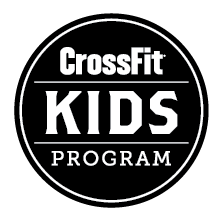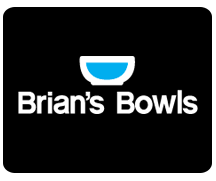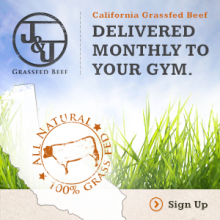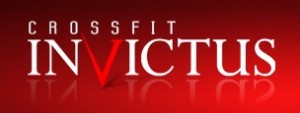20
Sep / 10
Atkins v Paleo
Categories: Nutrition, Workout of the Day
posted by: Marcus
When first starting the Paleo diet, people are eager to share the news with their friends and family. Upon hearing about the exclusion of breads, the follow-up question will usually be “Oh, you mean you’re doing Atkins?” While they do share some similarities at their core, the current incarnation of the Atkins Diet is very far removed from Paleo. Here’s a quick breakdown:
Atkins Diet
Created by Dr. Robert C. Atkins in 1963, the diet advocates an extremely low-carb approach during the “Induction” period. This initial two-week period requires steadfast tracking of carbohydrate (CHO) intake as the goal is to be under 20 total grams of carbohydrate per day. (For an idea of how much that is, just two carrots come in at about 20g CHO.) Now while some may think that’s no problem, keep in mind that one must also count the carb content in everything — condiments, vegetables, seasonings, etc. This initial restrictive period comes with some perceived benefit, as dieters will often lose some water weight immediately and proclaim the success of the diet. After this initial period, the diet allows a greater CHO intake and on paper begins to appear much like the Paleo diet.
Criticism of the Atkins diet parallels that of the Paleo diet in modern medicine’s fear of saturated fat, total fat intake, total protein intake and lack of “healthy whole grains”. Additionally, Atkins recommends a multivitamin/multimineral be taken during the Induction period as due to the water being flushed out, many nutrients come along for the ride. Also due to most people adjusting from a much higher CHO intake as part of the SAD, they will often feel a hit as their body adjusts to not relying on such extreme blood sugar levels. Critics will point to the need for supplementation and the initial lethargy as evidence of how unhealthy the Atkins diet is.
Paleo Diet
In 1975, Dr. Walter L. Voegtlin wrote a book called “The Stone Age Diet” which contained many of the elements of what is recommended as a Paleo diet today. The name “The Paleo Diet” became much more well known with the publication of Dr. Loren Cordain’s book of the same title in 2002. Both recommended that our human ancestors adapted to meals heavy in meat and fats and ate carbohydrate sources very sparingly, based on what they could forage. Further studies pointed to how Neolithic foods could be causing many of the prevalent modern maladies. Dr. Voegtlin was a gastroenterologist who had success with clearing up his patients’ various digestive problems through this dietary switch.
The Paleo diet typically ends up being lower in CHO intake than the SAD, but without the requirement of tracking total intake. Due to the exclusion of dense CHO sources, this is achieved quite easily. Also, the Paleo diet focuses on food quality which the Atkins diet mentions but does not emphasize. An additional factor of the Paleo diet is the avoidance of gut irritants such as beans and other legumes, wheat and other gluten-containing grains and other various lectins. This point is of utmost importance to Paleo, but Atkins states that whole grains and beans are acceptable past the Induction period.
Atkins had a boom back in the 70′s when his first book was published and a second larger craze when his follow-up book was released in the last 1990′s. The difference this time is that many manufacturers jumped on the low carb bandwagon and in the early 2000′s, you may recall a rapid increase in low-carb stores. Here’s an article from 2003 where the San Francisco Chronicle notes the proliferation of these stores. This is a major flaw in my opinion with the Atkins diet. It has now morphed into relying on crappy foods made “low carb” with the inclusion of sugar alcohols that the body cannot digest. This provides the sweet flavor, but may result in anal leakage — not exactly an appealing sales pitch. Shoehorning these junk food treats into a “low carb” approach also makes it that much harder for dieters to give up the SAD that caused them poor health in the first place. When the substitute foods taste similar to the real item, but not quite as good, it’s not that far a step for dieters to fall off the wagon and revert to junk food. Since the low carb fanatics were now seeing no success with their diets, those same stores were closing. Again, the San Francisco Chronicle just two short years later in 2005 wrote about the closures.
While I have followed the Atkins diet in the past, it’s no great secret what my diet consists of now. If any lesson can be learned of the low carb craze, it’s to steer clear of the highly-processed pseudo foods. You may see this now with the wide variety of gluten-free treats available at grocery stores. While the Paleo diet advocates no gluten, it also advocates unprocessed natural foods. If one has a failing of willpower and craves a cupcake, they are better off with a gluten-free one than not. But better yet, make Ruth’s recipe from last week which is about as clean as you can get. Just keep in mind, even those are not very “hunter gatherer” friendly and should be used as an occasional treat and not a daily indulgence. As such, you’re better off sharing them so you don’t have a refrigerator full of temptation — not to mention your gym mates will appreciate your generosity!
WOD 09.20.10
Back Squat 3×5
Then, 3 rounds for time:
- 20 KB Snatch
- 8 strict pullups
- 100m run


 310.465.6565 |
310.465.6565 |

























9 Responses to “Atkins v Paleo”
Scott
September 20, 2010 at 11:35 AM
Nice post Marcus! I can’t tell you how many times I’ve tried to explain Paleo to people and they respond, “Ohhh…. you’re on Atkins!” Mmmmm…nope! But you don’t seem to care enough to listen, so I don’t really care enough to explain it.
The other common response I get is people try to debate history with me. “But the paleo man drank wine, drank beer, drank milk, ate bread, etc.” I’m not a historian. I haven’t studied history since High School. I don’t know when man first fermented wine, brewed beer, etc. And even if I did, I don’t want to argue about it with you.
On a similar note, how many people are asked about P90X when they describe Crossfit? I can’t tell you how many times I’ve tried to describe Crossfit and the person replies, is that P90X? I need to start saying, “No, if it were P90X, I would have said I’m doing P90X!”
Maybe I should just reply that Crossfit is like P90X on steroids! The best part of that reply would be reading people’s faces. Half would think I’m doing steroids, while the other half would understand that I mean a more intense program similar to P90X.
Jason
September 20, 2010 at 12:26 PM
hilarious, Scott! and so true…
Nick
September 20, 2010 at 1:17 PM
haha, agreed Scott.
Thanks again Marcus for the abundance of information (and also the incredibly attractive picture of my face).
Pooja
September 20, 2010 at 2:05 PM
hahaha scott you’re a riot. crossfit = p90x for real men (and women) =)
Sean
September 20, 2010 at 2:23 PM
Lol Scott. I have that conversation about once a week. I really don’t know much about P90X except you pop in a video and do what it says. Might be post worthy one of these days (@Ruth & Marcus-I got dibs )
)
Michael H
September 20, 2010 at 3:39 PM
Speaking of diets, who’s up for a German diet this Friday @ Oktoberfest
BTW: I think P90x is a product of Richard Simmon’s son, minus the fro, the instructor wears a tank top and dolphin shorts and is just as annoying.
Marcus
September 20, 2010 at 3:39 PM
Oh… for those wondering about the Intrepid playlist, I finally got a chance to work on it over the weekend. About 40% complete, 52 songs to go.
Michael H
September 20, 2010 at 4:10 PM
Marcus which songs do you need? I may have them
Viv
September 21, 2010 at 8:36 AM
@Scott : if one more person asks me if I am doing p90x I’m going to scratch their eye out! Just the one eye; so they can wittness the awesomeness of Crossfit Intrepid athetes with the other!I didn’t even know what it was until a friend told me. I thought it was a drug!